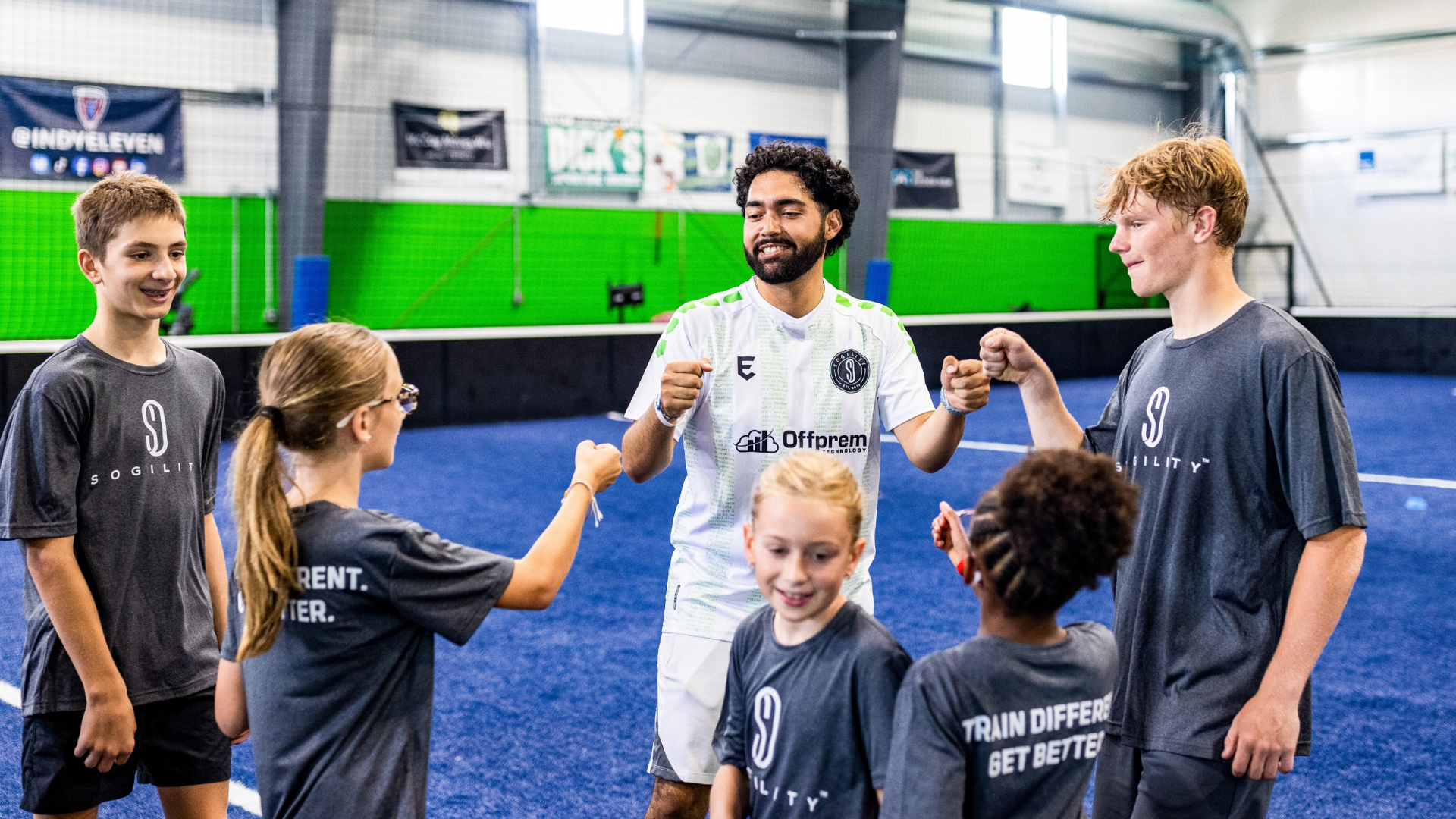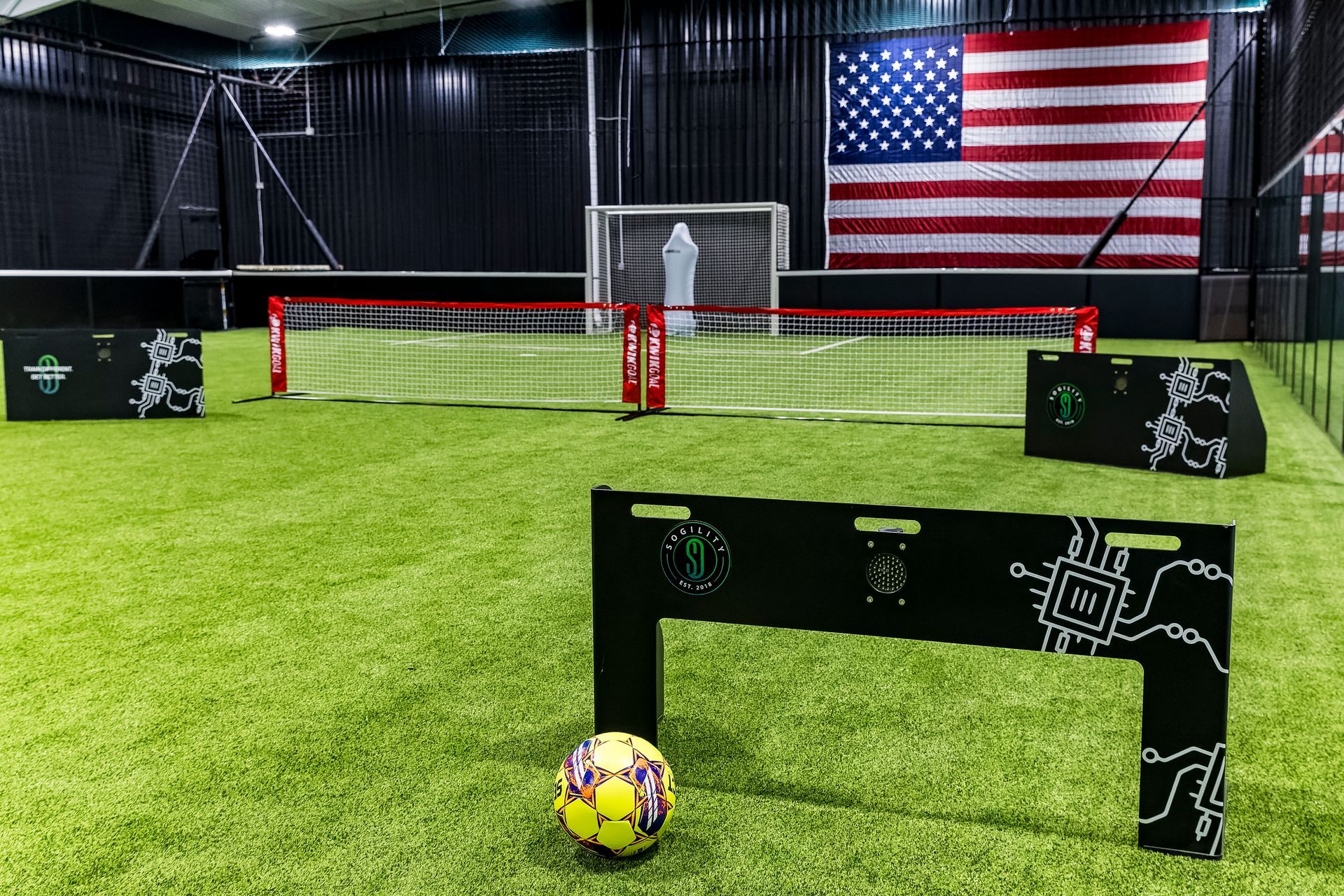How Sogility Training Translates to Game-Day Success
As a parent, you want to ensure that your child’s training directly enhances their performance on the field. At Sogility, every session is intentionally designed to replicate real-game situations, ensuring that players develop the technical, physical, and mental skills necessary to compete at their highest level.
Each Sogility training facet builds specific skills that translate into improved decision-making, sharper reflexes, and better execution under pressure. Here’s how our training directly connects to game-day performance.
Technical Soccer Zone (TSZ) → Precision Passing & Ball Control Under Pressure
Game-Day Connection: The ability to pass and receive accurately under pressure can determine whether a team maintains possession or loses control of the game. A well-timed pass can break through the opposition’s defense, while poor ball control can disrupt the flow of play.
How TSZ Helps: The high repetition passing and receiving drills in TSZ help players develop faster decision-making, improved ball control, and precision. These drills simulate real-match pressure, ensuring players are ready to execute quick, accurate passes in tight spaces.
TechTouch → Reacting to Unpredictable Situations
Game-Day Connection: In a match, players rarely receive perfect passes. The ball may come at unexpected speeds, heights, and angles, and the ability to adjust instantly is crucial to maintaining possession and transitioning into the next play.
How TechTouch Helps: Using advanced ball-launching technology, TechTouch sessions challenge players to control passes at varying speeds, heights, and angles, improving their first touch, reaction speed, and ability to adjust on the fly. This training ensures that players remain composed and in control, even in chaotic game situations.
Circuit Training → Quick Footwork & Smart Decision-Making
Game-Day Connection: Whether dribbling through traffic or adjusting defensive positioning, players need quick feet and sharp decision-making to react effectively. A split-second delay can mean the difference between breaking through a defense or losing possession.
How Circuit Training Helps: This training builds speed, agility, and visual processing skills, helping players recognize patterns, read the game faster, and execute precise movements in tight spaces. Players become more efficient at navigating high-pressure situations, gaining a competitive edge on the field.
On The Ball → Confidence in 1v1 Battles
Game-Day Connection: Players frequently find themselves in one-on-one situations, whether trying to beat a defender, protect the ball, or execute a key pass. Confidence and control in these moments can open up scoring opportunities and shift the momentum of the game.
How On The Ball Helps: Focused technical drills improve ball mastery, dribbling confidence, and passing accuracy, ensuring that players can navigate defenders, create space, and maintain possession under pressure. This training is essential for developing the skills needed to dominate one-on-one matchups.
Athlete Development → Strength, Speed, & Injury Prevention
Game-Day Connection: Soccer demands explosiveness, endurance, and physical resilience. A player who is strong and conditioned can compete at a higher level, outlasting opponents and reducing the risk of injury.
How Athlete Development Helps: Built on proven Olympic training methods, this program focuses on soccer-specific strength, agility, and conditioning, ensuring players can perform at their peak for an entire match. Additionally, injury prevention techniques help reduce common soccer-related injuries, keeping players on the field and in top shape.
Neuro Training → Faster Decision-Making & Situational Awareness
Game-Day Connection: The best players don’t just react to the game—they anticipate what’s going to happen next. Quick thinking and the ability to process information rapidly give players an edge in reading plays, positioning, and making split-second decisions.
How Neuro Training Helps: By using cognitive training tools and expert coaching, players improve their reaction time, spatial awareness, and ability to process in-game situations more efficiently. This training helps players stay ahead of the play, anticipate movements, and make smarter decisions under pressure.
Why This Matters for Players & Parents
Sogility isn’t just another soccer training program, it’s a comprehensive development system designed to prepare players for the realities of competitive soccer. Every drill, session, and repetition are built with real-game application in mind, helping players:
- Develop technical precision for passing, receiving, and ball control
- Enhance decision-making and reaction speed under game-like pressure
- Increase physical strength, agility, and endurance to compete at a higher level
- Improve cognitive awareness to anticipate plays and react faster
If you’re ready to see how Sogility training can elevate your child’s game, schedule a free trial today and experience the difference for yourself.



